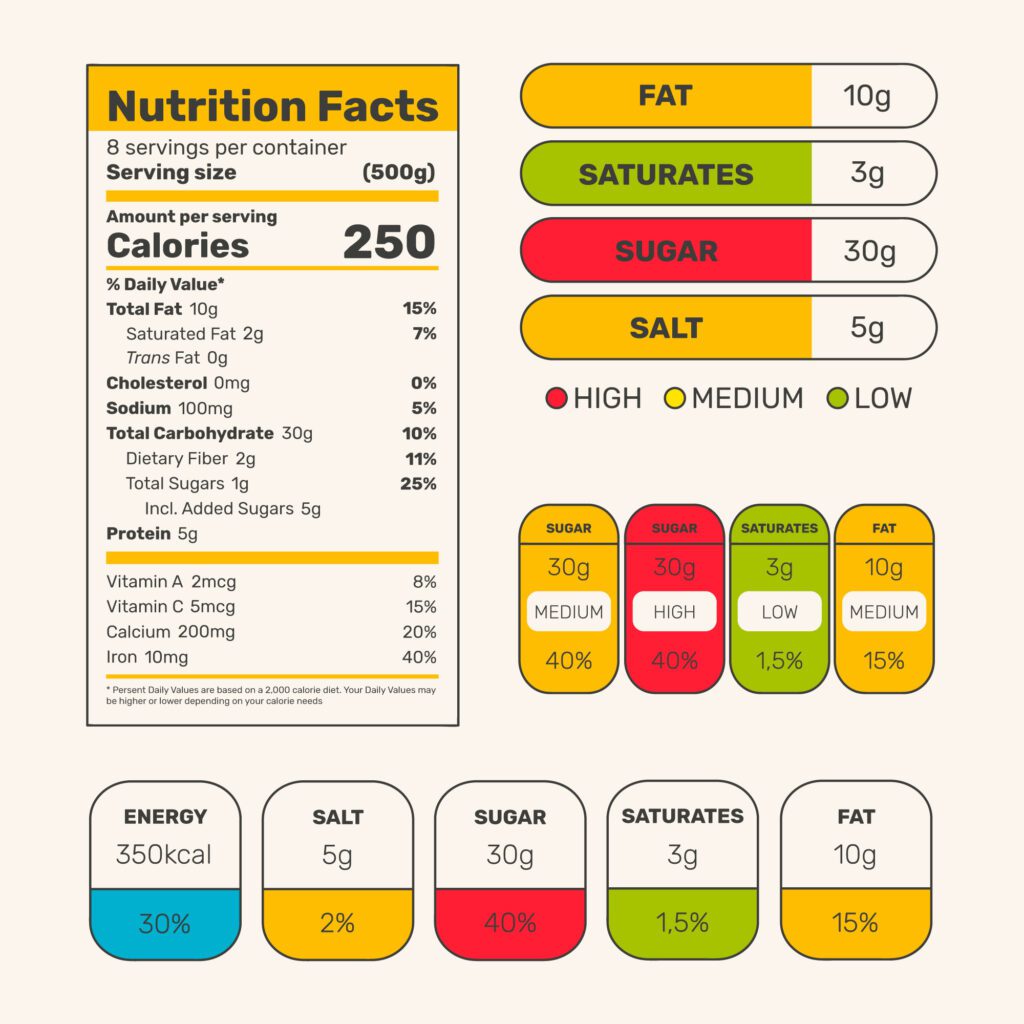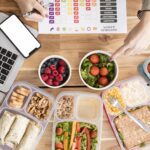Introduction
If you’re trying to eat healthier, lose fat, or gain muscle, learning how to read a nutrition label is a must-have skill. It’s not just about counting calories—it’s about understanding what’s actually in your food and how it supports your goals.
Unfortunately, food labels can be confusing or even misleading. Between tricky serving sizes and hidden sugars, many people end up making poor choices without realizing it. But don’t worry—we’re here to break it all down in simple terms.
This guide will show you exactly what to look for when reading a nutrition label, from calories and macros to ingredients and claims on the front of the package.
Why Nutrition Labels Matter
Nutrition labels are a valuable tool that helps you:
- Compare products
- Track calories and macronutrients
- Avoid harmful additives or excess sugar
- Make better choices for weight loss, muscle gain, or maintenance
- Improve your long-term health
According to the FDA, being label-savvy can significantly improve how you eat on a daily basis.
1. Start With the Serving Size
The very first thing to check is the serving size—because all the numbers on the label are based on it.
For example, if a label shows:
- Serving Size: 1 cup
- Servings Per Container: 2
Then all the calories, carbs, and protein listed are only for 1 cup. If you eat the entire package, you need to double the numbers.
👉 This is especially important for foods like chips, cereals, and drinks—where it’s easy to eat more than the serving size.
2. Check the Calories
Next, look at the calories per serving. This tells you how much energy you’ll get from the food.
Keep in mind:
- Low-calorie ≠ healthy (e.g., diet soda has no calories but no nutrients either)
- High-calorie foods aren’t always bad (e.g., nuts are calorie-dense but nutritious)
Use your calorie needs as a guide. Not sure how many you need? Read our guide on How to Calculate Your Maintenance Calories.
3. Look at Macronutrients
🔹 Protein
This is your muscle-building macro. Aim for 15–30g per meal if you’re strength training. A food with 0–2g of protein is not going to keep you full or support recovery.
Learn more about how protein fuels your gains in our article on Nutrition for Strength Training.
🔹 Carbohydrates
Carbs provide energy, but not all carbs are created equal. Look under “Total Carbohydrates” for:
- Fiber (aim for 25–35g/day): Keeps digestion healthy and helps control hunger
- Sugars (keep it low): Watch out for “added sugars” like corn syrup or cane sugar
The American Heart Association recommends no more than 25g (women) or 36g (men) of added sugar per day.
🔹 Fats
Not all fats are bad! Look for:
- Healthy fats: unsaturated fats (avocados, olive oil, nuts)
- Limit: saturated fat
- Avoid completely: trans fats (often listed as “partially hydrogenated oil”)
4. Watch Out for Sodium
Too much sodium (salt) can lead to high blood pressure and bloating. Check this number, especially in canned soups, frozen meals, and sauces.
- Ideal per serving: Under 300mg
- Daily max: 2300mg (according to CDC guidelines)
💡 Tip: “Reduced sodium” doesn’t always mean low—it just means lower than the original.
5. Understand % Daily Value (%DV)
This shows how much a nutrient contributes to your daily needs based on a 2,000-calorie diet.
- 5% or less = Low
- 20% or more = High
Use %DV to compare foods:
- High in fiber, calcium, iron, and protein
- Low in saturated fat, sodium, and added sugar
6. Read the Ingredients List
Always scan the ingredients list—not just the numbers. Ingredients are listed in order of quantity, so the first few items make up most of the food.
Watch for:
- Whole foods first (whole grains, oats, nuts, vegetables)
- Fewer ingredients = generally better
- Avoid long chemical names, artificial flavors, and color additives
Also beware of hidden sugar names like:
- Dextrose
- Maltose
- Corn syrup
- Fruit juice concentrate
7. Ignore Marketing Buzzwords
Just because a label says “low fat,” “natural,” or “gluten-free” doesn’t mean the food is healthy. These are marketing tactics—not nutritional guarantees.
Instead of focusing on front-of-package claims, flip it over and look at the real facts.
✅ Pro tip: Foods with no label—like fruits, veggies, eggs, and fresh meat—are often your best choices.

Label Reading in Real Life: Quick Tips
Here’s a quick checklist to help you scan nutrition labels faster:
✔ Start with serving size
✔ Scan calories per serving
✔ Look for at least 5g protein per snack
✔ Choose products with low sugar and sodium
✔ Prioritize foods high in fiber and healthy fats
✔ Check ingredients—shorter is usually better
Practice with Common Items
Compare these two bars:
Protein Bar A
- 190 calories
- 20g protein
- 1g sugar
- 7 ingredients
Snack Bar B
- 220 calories
- 2g protein
- 14g sugar
- 21 ingredients
Although Bar B might be “natural” and “vegan,” Bar A is clearly better if you’re training or watching sugar intake.
Conclusion
Learning how to read a nutrition label gives you control over your health. Once you understand what’s in your food, you can make smarter decisions, fuel your workouts, and support your fitness goals.
You don’t need to read every label forever—but building this habit early will help you spot good (and bad) choices in seconds.
👉 Want to take your nutrition further? Read Meal Planning 101: Save Time, Eat Healthy to start organizing balanced meals that match your goals.



